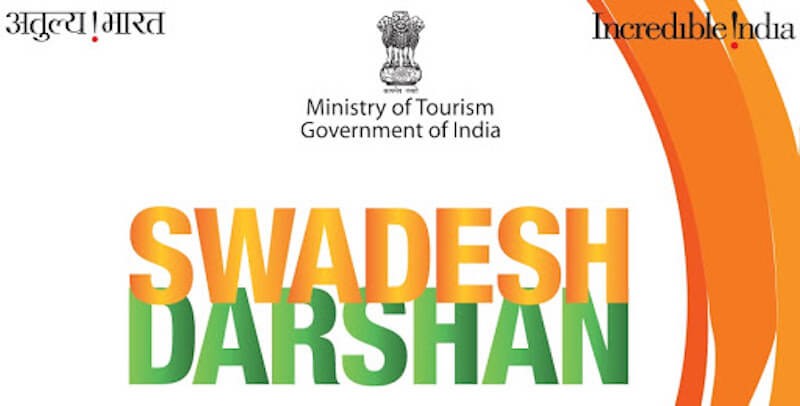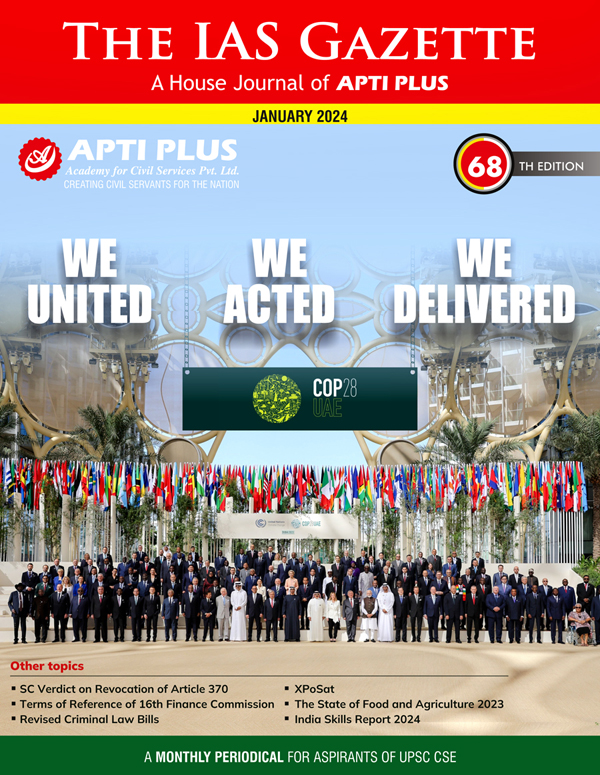Description

Disclaimer: Copyright infringement not intended.
Context
- The Ministry of Tourism has included the UNESCO World Heritage sites of Ajanta and Ellora caves in Chhatrapati Sambhajinagar in its Swadesh Darshan Scheme II, which aims to develop sustainable and responsible tourism destinations in India.
Details
- With the addition of Ajanta and Ellora caves, there are now 57 destinations covered under the Swadesh Darshan Scheme II across 32 states and Union Territories.
- Additionally, the Ghrishneshwar Temple in Chhatrapati Sambhajinagar district was recently included in the Pilgrimage Rejuvenation and Spiritual, Heritage Augmentation Drive scheme.
Global Tourism Industry
- Contribution to GDP: The Travel and Tourism (T&T) industry contributes about 3.6% of the world’s Gross Domestic Product (GDP) directly and about 10.3% indirectly.
- Employment: It directly employs nearly 77 million people worldwide, accounting for about 3% of the world’s total employment.
- Exports: The industry represents about 12% of the total world exports.
- Drivers for Growth: Key drivers for tourism in the next decade include world prosperity, recognition of tourism’s contribution to employment and economic growth, better infrastructure, focused marketing and promotion efforts, air transport liberalization, intraregional cooperation, and Public-Private-Partnerships (PPPs).
Indian Tourism Industry
- GDP Contribution: The travel and tourism industry contributed $124.8 billion to India's GDP in 2015, accounting for approximately 10% of India’s total GDP in 2020.
- Growth Rate: India was one of the fastest-growing tourism destinations worldwide, with the direct contribution expected to grow at an average of 6.4% annually between 2014 and 2024.
- Expected Growth: The sector is expected to grow at an annual average growth rate of 7.9% till 2023, making India the third fastest-growing tourism destination over the next decade.
- Employment: Tourism in India provides 40 million jobs, with over 7.7% of Indian employees working in the tourism industry.
- Visitor Markets: The largest source market for visitors to India is the US, followed by Bangladesh and the UK. Outbound travel from India is also forecasted to reach 1.41 million in 2020.
- Post-Pandemic Revival: Foreign tourist arrivals (FTAs) in March 2022 showed positive growth, indicating the post-pandemic revival of the tourism sector.
- Global Ranking: The World Economic Forum’s Travel and Tourism Development Index 2021 ranks India 54th out of 117 countries overall.

Swadesh Darshan Scheme
- Launch: The Swadesh Darshan Scheme was launched in 2015 by the Ministry of Tourism, Government of India, with the aim of developing sustainable and responsible tourism destinations in the country.
- Funding: It is a 100% centrally funded scheme where the Ministry of Tourism provides financial assistance to State governments, Union Territory Administrations, or Central Agencies for the development of tourism infrastructure.
- Operation & Maintenance: The responsibility of Operation & Maintenance (O&M) of the projects sanctioned under the Swadesh Darshan Scheme lies with the respective State Government/UT Administration.
- Theme-Based Tourism: The scheme is based on theme-based tourism, where each theme is called a "circuit" and composed of various tourist destinations. Some of the circuits include the Buddhist circle, Coastal circle, Desert circle, Eco circle, Heritage circle, Himalayan circle, Krishna circle, North-East circle, Ramayan circuit, Rural circle, Spiritual circle, Sufi circle, Tirthankar circle, Tribal circle, and Wildlife circle.
Swadesh Darshan 2.0
- Revamp: The Ministry of Tourism has revamped the Swadesh Darshan scheme as Swadesh Darshan 2.0 (SD2.0) with the objective of developing sustainable and responsible tourist destinations covering tourism and allied infrastructure, tourism services, human capital development, destination management, and promotion backed by policy and institutional reforms.
- Objective: The objective of the Swadesh Darshan 2.0 scheme is to increase private sector investment in tourism & hospitality and foster Public-Private Partnerships (PPP) in the field of tourism and operation and maintenance of the created assets under the scheme.
- Themes: Major themes identified for tourism under the Swadesh Darshan 2.0 Scheme include Culture and Heritage, Adventure Tourism, Eco-Tourism, Wellness Tourism, MICE Tourism, Rural Tourism, Beach Tourism, and Cruises – Ocean & Inland.
PRASAD Scheme Overview
- Launch: The PRASAD Scheme, initially known as the Pilgrimage Rejuvenation And Spirituality Augmentation Drive, was launched in 2014-2015 by the Government of India under the Ministry of Tourism.
- In October 2017, it was renamed as the National Mission on Pilgrimage Rejuvenation and Spiritual Heritage Augmentation Drive (PRASHAD).
Objectives of the PRASAD Scheme:
- Enhanced Religious Tourism: To identify pilgrimage sites across India and develop them to promote religious tourism.
- Holistic Development: To ensure sustainable, prioritized, and planned integration of pilgrimage sites, enhancing the religious tourism experience.
- Community-Based Development: To promote community-based development of pilgrimage sites, involving various stakeholders.
- Infrastructure Development: To enhance the infrastructure at pilgrimage sites to provide a world-class tourism experience.
- Promotion of Local Culture: To promote local artists, handicrafts, culture, food, etc., generating employment and income.
- Utilization of Public Expertise: To make use of public expertise and capital for the development of pilgrimage sites.
Operation of PRASAD Scheme:
- A Mission Directorate has been established by the central government to identify pilgrimage sites and assist state governments in project implementation.
- A Central Sanctioning and Monitoring Committee reviews and sanctions proposals from the Mission Directorate.
- A National Steering Committee provides guidance and monitors project implementation.
- Projects under this scheme are 100% centrally funded, and funding from businesses under CSR and through Public-Private Partnership models is also utilized.
Selection Criteria:
- The PRASAD Scheme focuses on specific components such as infrastructure development, skill development, capacity building, and knowledge management.
- Components that qualify under the scheme include infrastructure development, skill development programs, enhancing internet services, and technology usage.
- Activities such as land acquisition, asset management, and private investments do not classify under the PRASAD scheme.
Cities Identified:
- Various cities across India have been identified under the PRASAD Scheme, including Kedarnath (Uttarakhand), Mathura (Uttar Pradesh), Amritsar (Punjab), Gaya (Bihar), Varanasi (Uttar Pradesh), Ajmer (Rajasthan), Dwarka (Gujarat), Kamakhya (Assam), Puri (Odisha), Kanchipuram (Tamil Nadu), Velankanni (Tamil Nadu), and Amaravati (Andhra Pradesh), among others.
Ajanta Caves
- Location: Situated in the Sahyadri ranges (Western Ghats) on the Waghora river near Aurangabad in Maharashtra.
- Number of Caves: Consists of 29 Buddhist caves, with 4 used as prayer halls (Chaitya) and 25 as residential caves (Viharas).
- Development Period: Constructed between 200 B.C. to 650 A.D.
- Patronage: Inscribed by Buddhist monks, supported by Vakataka kings like Harisena, Satavahanas, and Chalukyas.
- Chinese Travellers' Accounts: Fa-Hien and Hiuen Tsang visited during the reigns of Chandragupta II and Harshavardhana, respectively.
- Paintings: Executed using fresco painting, themed around Buddhism, depicting the life of Buddha and Jataka stories.
- UNESCO Site: Designated as a UNESCO World Heritage site in 1983.

Ellora Caves
- Location: Located approximately 100 kilometers away from Ajanta caves, also in the Sahyadri range of Maharashtra.
- Number of Caves: Comprising a group of 34 caves, including 17 Brahmanical, 12 Buddhist, and 5 Jain caves.
- Development Period: Constructed between the 5th and 11th centuries A.D. by various guilds from Vidarbha, Karnataka, and Tamil Nadu.
- Patronage: Supported by Rashtrakutas, Kalachuris, Chalukyas, and Yadavas, illustrating religious harmony.
- Kailasa Temple: Notable for Kailasa (Kailasanatha; cave 16), featuring the largest monolithic rock excavation globally, dedicated to Lord Shiva.
- UNESCO Site: Recognized as a UNESCO World Heritage site in 1983.
|
PRACTICE QUESTION
Q. Evaluate the objectives and implementation strategies of the PRASAD and Swadesh Darshan schemes initiated by the Government of India for promoting tourism and cultural heritage. (15 marks)
|
















